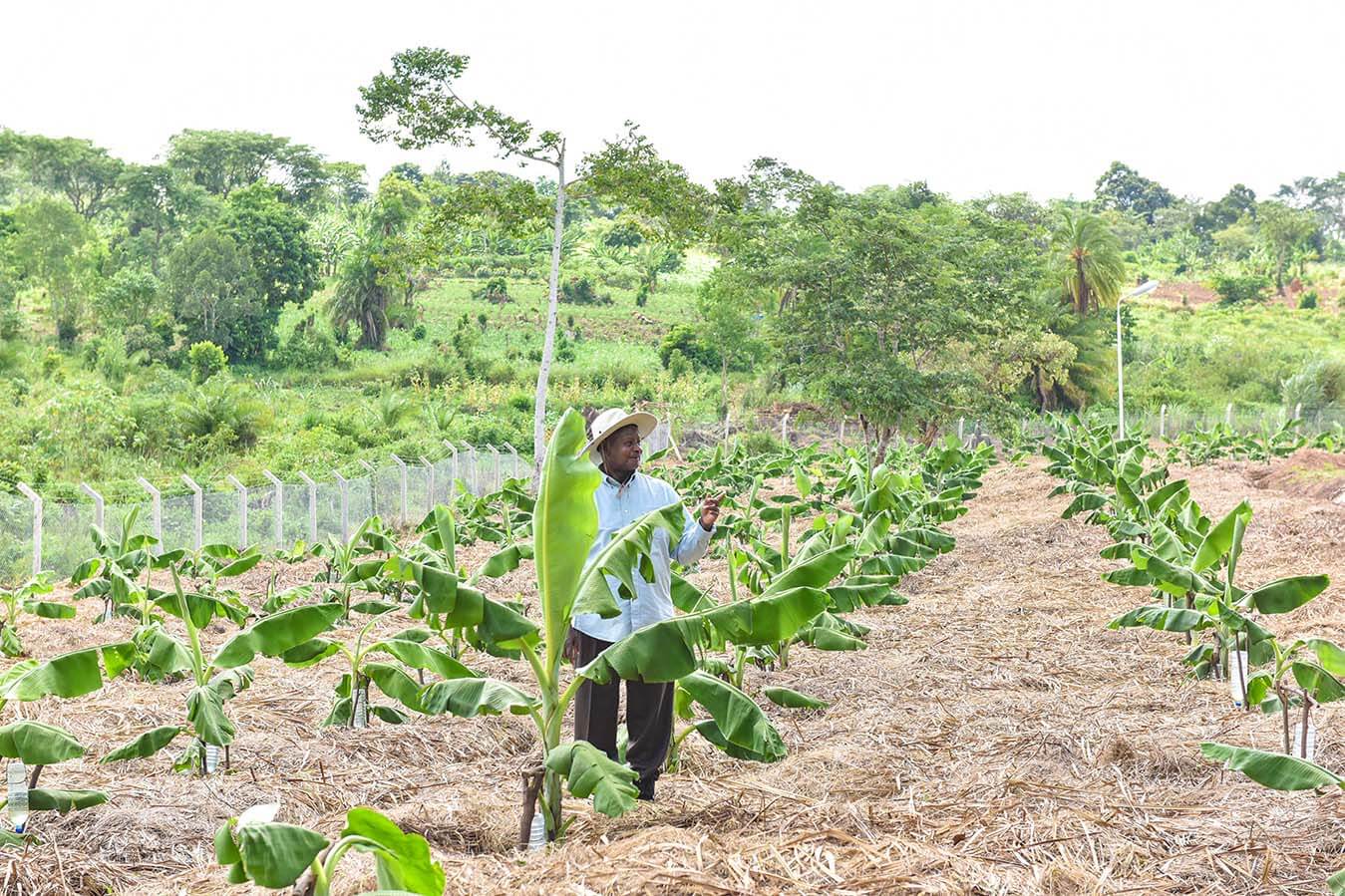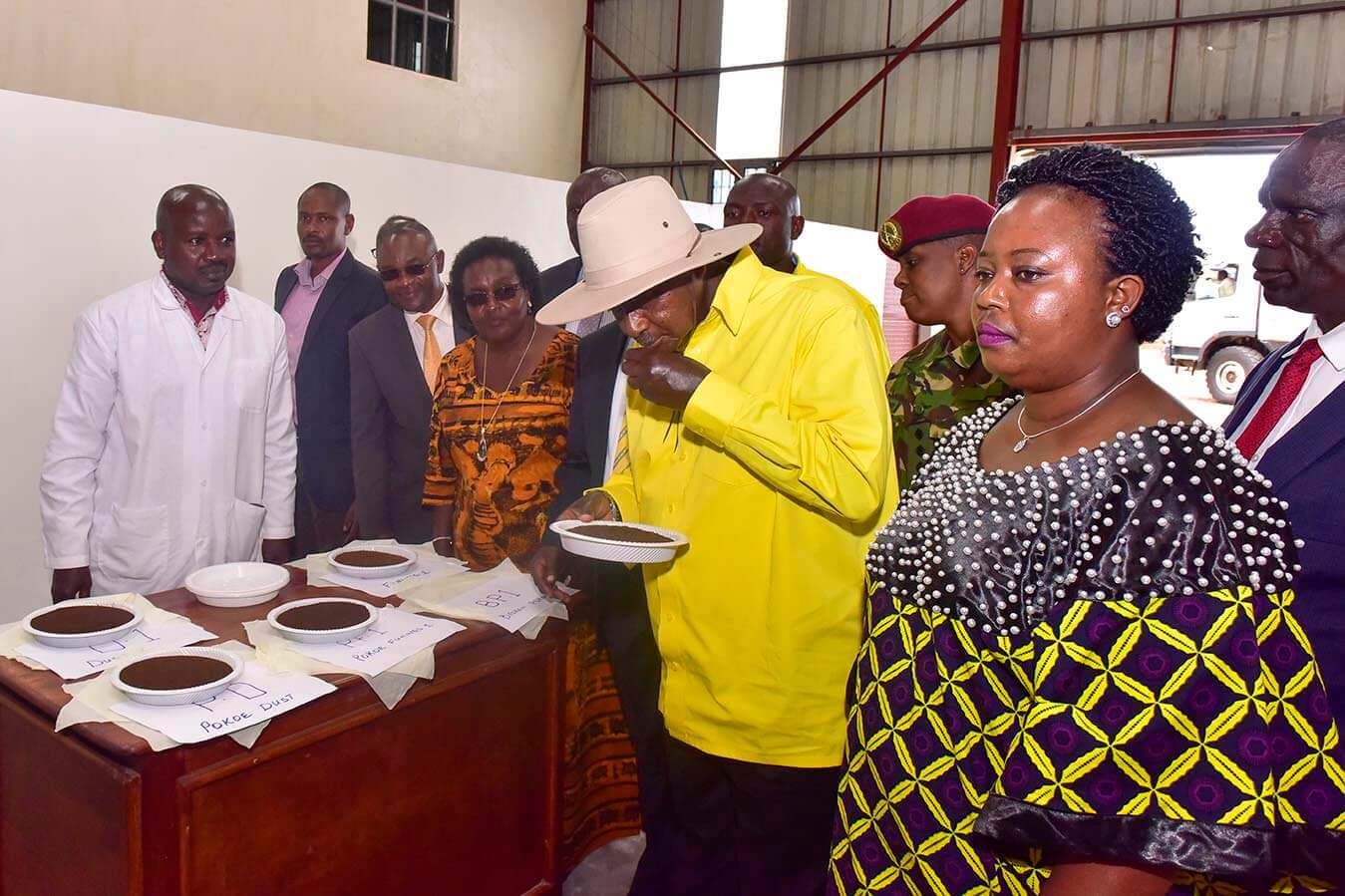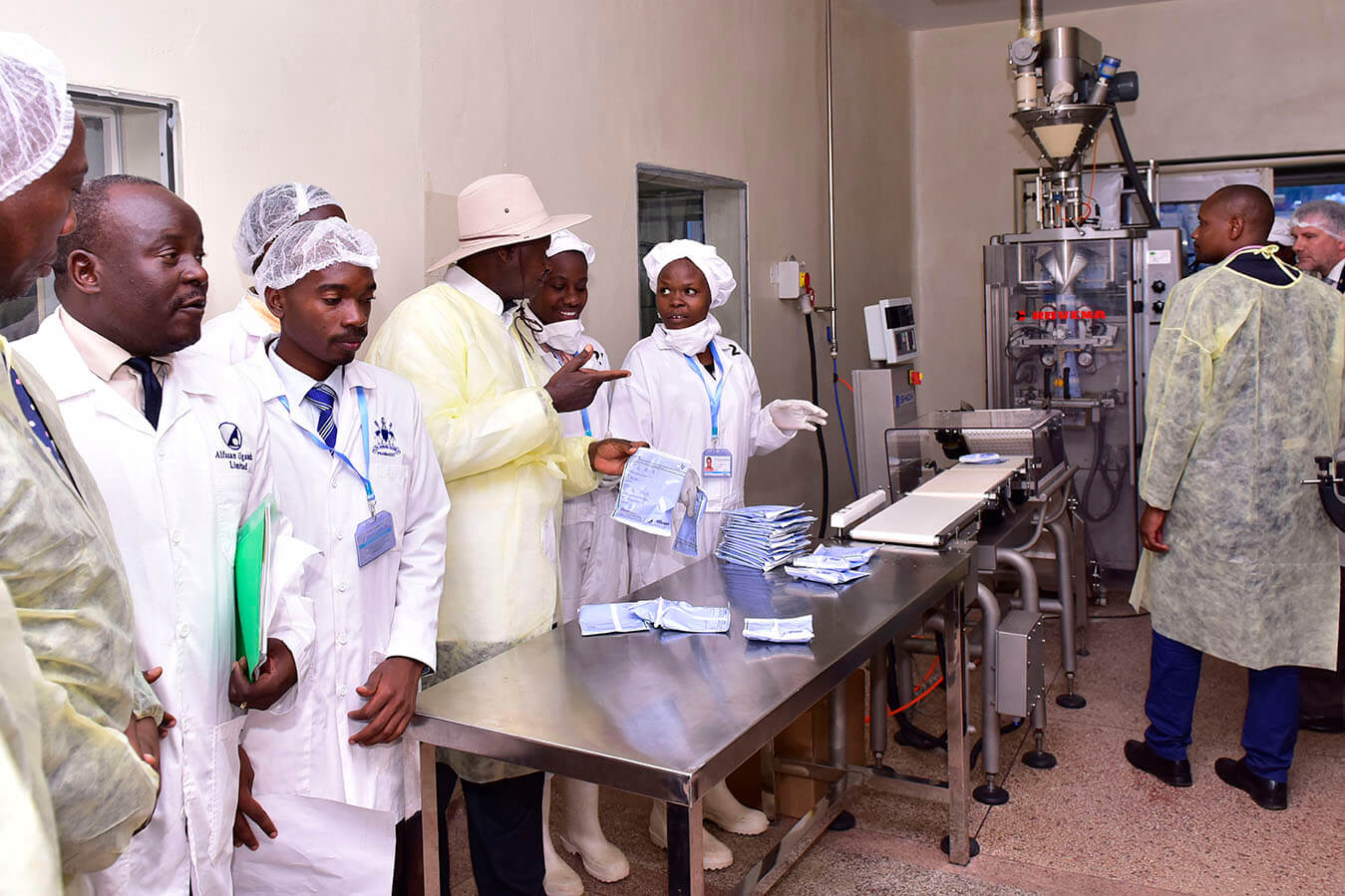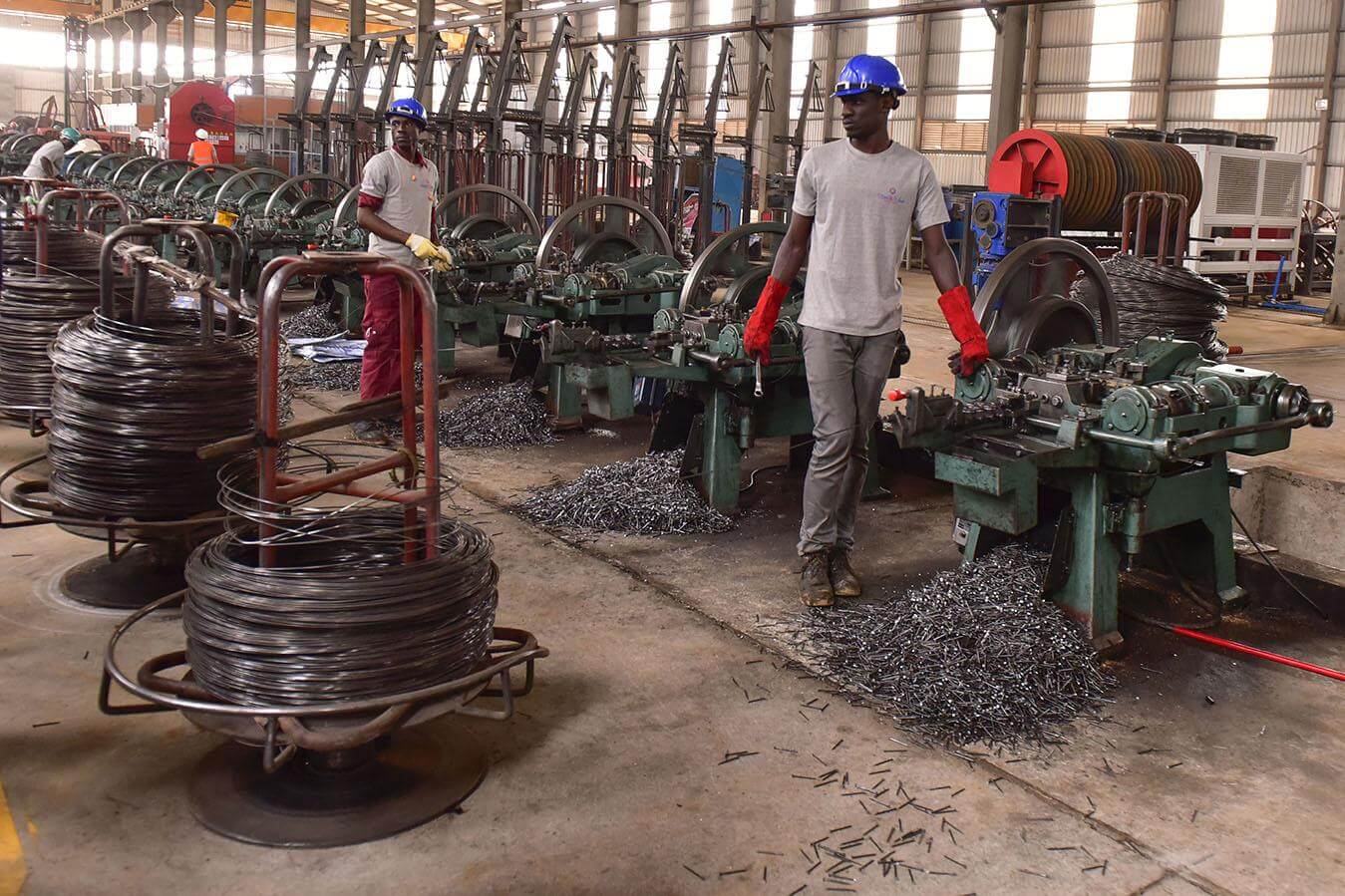
After restoring peace and stability after about three decades of political upheaval, the NRM government embarked on the journey of economic emancipation of Ugandans, focusing on how to create jobs and support individuals in creating wealth.
President Museveni’s vision and that of the NRM party is to create wealth and jobs through four key sub-sectors; commercial agriculture, industrialisation, services and ICT. Here is a synopsis of how it will work.
On commercial agriculture, structured investments and support to farmers through the Operation Wealth Creation and the National Agriculture Advisory Services (NAADS) has begun to bear fruit. After a long stagnation of Uganda’s coffee production at 3 million 60kg bags for years, OWC deliberately intervened, distributing 702 million free coffee seedlings to 1.2 million households in 112 coffee-producing districts. The effect has been an increase in volume of coffee produced from 4.55 million 60kg bags in 2015 to 7.75 million in 2019. As a result, Uganda’s export earnings from coffee have increased from $352m in 2015 to $496m in 2019/20, notwithstanding the drop in coffee prices on the international market down to $1.62 per kg in 2019/20 from $2.06 in 2015/16. The target is 20 million bags by 2025.
This story of promise is the same with other crops like maize whose production has increased by 52% from 2.6 million metric tonnes in 2016 to 5 million metric tonnes in 2019. Maize exports fetched $95.48m in 2019, up from $84.99m in 2016.

For tea, production has increased by 19% from 67,000 metric tonnes in 2015/16 to 79,466 metric tonnes in FY2018/19. Tea exports fetched $89m in 2019 from $74.5m in FY2016.
On the dairy front, the NRM is going to establish four mini-dairy processing facilities (5,000-10,000 litres/hr) across the four regions of Uganda. These facilities will be able to process dairy products such as pasteurised milk, yoghurt, ice cream and other products. Going forward, in the next term of office, the NRM government will build regional agricultural processing and marketing hubs for the 14 production lines in the real economy as President Museveni guided the country to prioritise. These lines are maize, cassava, banana, beans, Irish potato, sweet potato, millet, sugar cane, cattle (beef), dairy cattle, coffee, tea, cocoa and fish.

The parish model
In the next term of government, the parish is going to be the vehicle for data gathering, area-based enterprise selection and development, co-operatives and financial services development, community mobilisation and mind-set change. Also it will be the centre for multi-stakeholder/sectoral co-ordination, and providing feedback on government services. For instance, the multiplication and distribution of inputs is going to be guided by science and markets at the parish level to address the perennial challenges of input distribution such as poor quality seedlings and breeds, untimely delivery and the high mortality rate. Also it will tackle misuse of drugs and agro-chemicals, poor agronomic and husbandry practices. In addition, the parish model will help the NRM deal with high post-harvest losses, poor planning, bulking and marketing of produce, low commodity prices (exploitation of farmers by middle men) and inability to track progress.

The second route to wealth creation and jobs is through industrialisation. The NRM government and President Museveni have deliberately created a conducive environment to support industrialisation. This has been through ensuring peace and stability, massively investing in infrastructure like roads, building dams to lower cost of electricity hence production, training human resource, working towards reduction of cost of money, among others. Due to these interventions, the number of factories in Uganda have increased from 80 in 1986 to 4,920 today, creating over 50,000 industrial jobs since 2008. To support the growth of industries across the country, the NRM government has already established nine industrial parks; Kampala Industrial Park in Namanve, Luzira Industrial Park, Bweyogerere Industrial Estate, Jinja Industrial and Business Park, Sino Uganda Mbale Industrial Park, Soroti Industrial and Business Park, Karamoja Industrial and Business Park, Kasese Industrial and Business Park and Mbarara SME Park.In the coming years, more industrial parks will be built in Arua, Iganga, Bushenyi, Lira, Rakai, Gulu, Masaka, Nakasongola, Moroto, Tororo, Kabale, Hoima, Fort Portal, Luweero-Nakaseke, Buliisa, Mubende, Nwoya and Pakwach.
Industrialisation, therefore, in the next five years will focus on import substitution and export-oriented production. The target is to increase the contribution of the industrial sector to over a third of GDP, the share of Ugandans employed in industry to 26%, and the manufactured exports as a percentage of total exports to 50%. Over Shs1,800b will be provided over the next five years to set up the above-listed industries, which in return are expected to generate 82,300 direct jobs, 80,300 indirect jobs and over 23,000 induced jobs.

The third platform on which wealth and jobs creation are anchored, is that of Information and Communication Technology (ICT). Today, nearly all Ugandan households have a mobile phone. Telephone subscriptions have increased from 20.5 million in 2015 to 23.2 million in 2017 resulting in a teledensity of 66.9% and the number of internet users has also increased from 6.2 million in 2015 to 9.8 million users in 2017. This translated into an internet penetration rate of 25%.
The NRM will use ICT for e-education, e-security, e-governance, e-health, e-extension to deliver government services better. Ugandan youth will be supported to innovate to improve ICT services across the country. Some of the progress in this sector is that the National Backbone Infrastructure (NBI) has been extended to 483 Government sites and target user groups. The NBI currently covers 49 districts.
The price of internet for MDAs and LGs has significantly dropped, from an average cost of 1 Mbps/month for $300 in 2015 to $70 in 2018, as a result of completion of alternative routes to the sea cables through Mutukula and Katuna. The commercial Internet Service Providers (ISPs) have accordingly slashed their prices for 1 Mbps/month from an average of US$ 515 in 2015, down to US$237 in 2018.
Currently, eight ICT innovation hubs have received a total of Shs1.6b from government to support their operations. They are in Kampala and other regions (Mbarara University, Muni University in Arua, Makerere University, Innovation Village Ntinda, Soroti University and Makerere University Business School,). These hubs provide free work spaces (including laptops and internet) for the youth to develop their innovations. More hubs will be built in other regions.
The Government, through partnership with SIMI Mobile, established the first Mobile Phone and Computer manufacturing and assembling plant in November 2019 at the KIBP, Namanve. TV Orion is now manufactured locally.
The NRM government has established over 1,040 School ICT Laboratories intended to provide digital literacy skills to the communities and schools. An additional 47 labs are to be launched. The National ICT Innovation and Incubation Hub at Nakawa that is currently under construction with support from UPDF Engineering Brigade will mentor and coach SMEs. NITA-U is in the process of establishing the ICT Park on 17 acres in Entebbe, donated by President Museveni. The BPO centre developed at Statistics House in Kampala and is being run by a private sector company to offer call services. Furthermore, Government is offering incentives to BPOs.
Going forward, focus in the ICT sector will be on ensuring nationwide coverage of broadband ICT infrastructure to all key service delivery units such as schools, hospitals, police, tourism sites. The Digital Terrestrial Television and Radio Broadcasting network countrywide will be expanded using both satellite and terrestrial signals to ensure that it is accessible by all.

Services as the fourth creator of jobs and wealth encompasses sectors like tourism, hospitality, banking, telecoms, among others. Besides facilitating an enabling environment for these services providers to exist, the government has ensured access to incentives for them to thrive. In the tourism sector, the government has improved connectivity through development of tourism roads, the revival of the national carrier, conservation of our heritage as well as the promotion and show casing of the potential have been identified a priority. As a result, Uganda’s tourism has become a powerful national socio-economic sector with its total contribution to GDP reaching sh8.36 trillion and tourism foreign exchange earnings expanding from $834m in 2012 to $1.6b in 2018 thus greatly supporting Uganda’s balance of payment position. The sector currently employs more than 650,000 people.
The NRM government’s target is to increase annual forex receipts from tourism to US$2.5b in 2024/25, creating additional 500,000 jobs and increasing the competitiveness of Uganda’s tourism.
Focus will be on helping the sector recover faster from Covid-19 pandemic, implement a national tourism marketing strategy- domestic and international- as well as building a positive and competitive image by rolling out the Pearl of Africa brand in Africa and 12 overseas markets.
Focus will also be on upgrading 1,000km of national tourism roads, complete Hoima International Airport and expand Entebbe International Airport as well as construct and rehabilitate marine routes including 20 docking piers on Lake Victoria. Upgrading domestic airports such as Arua, Gulu and Kasese to improve internal connectivity for tourists.


